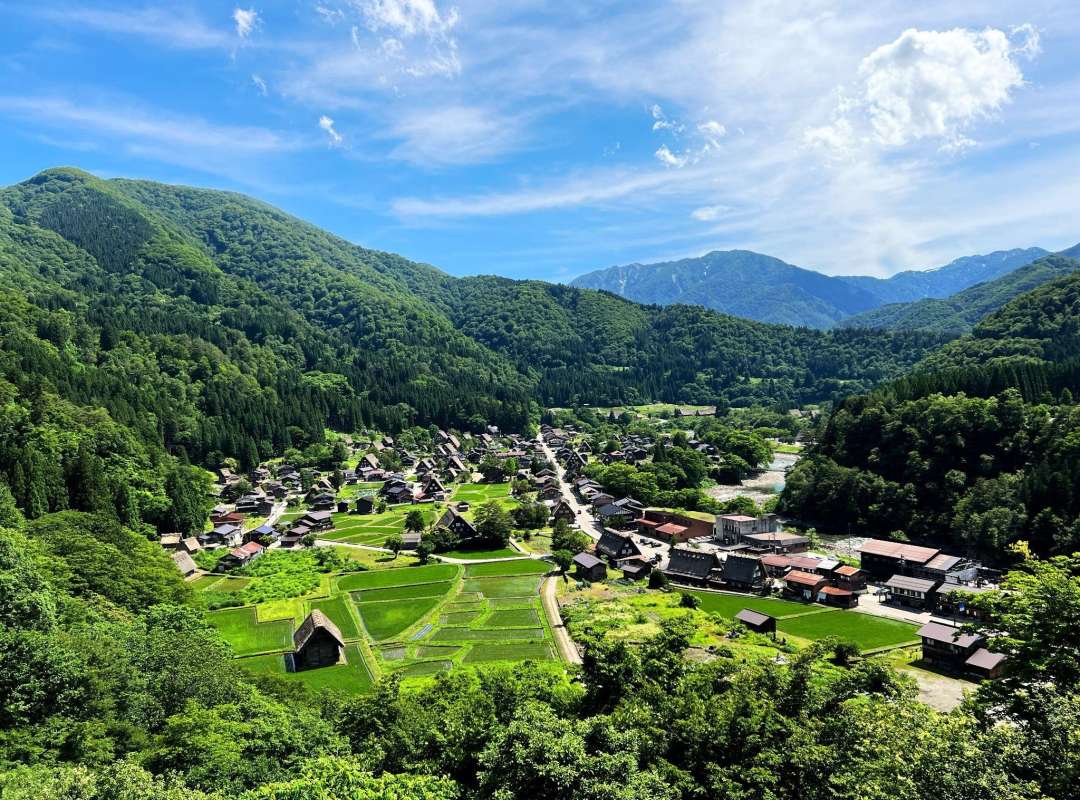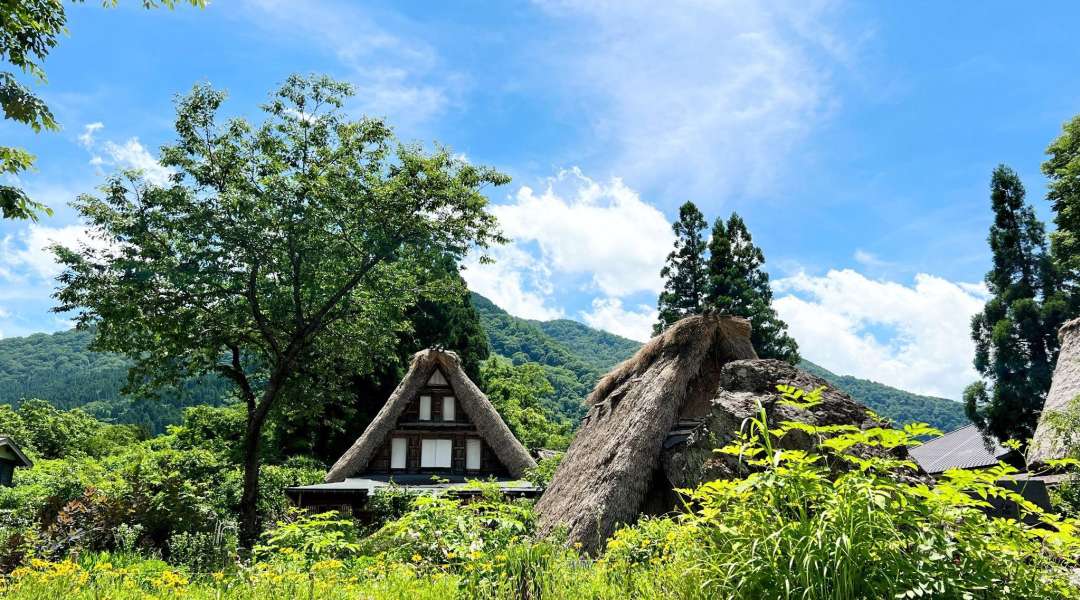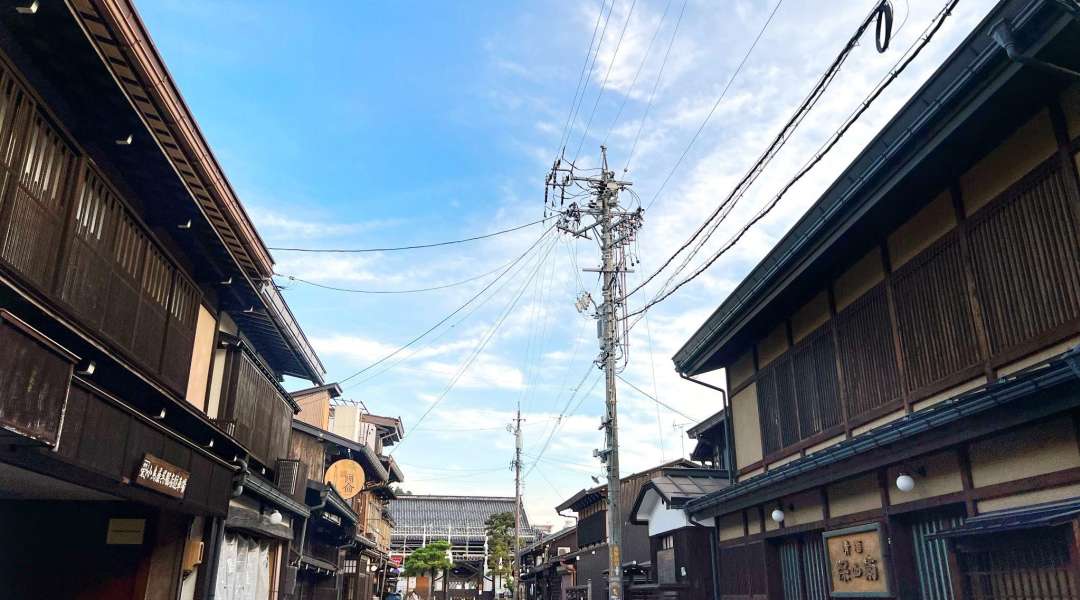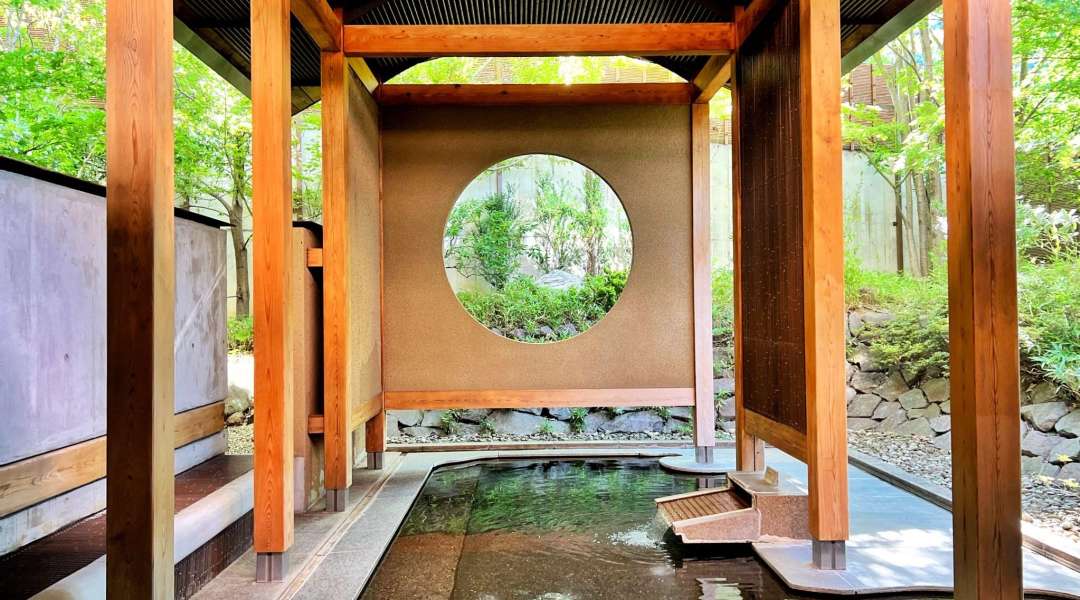 The gassho-zukuri thatched houses of Shirakawago
The gassho-zukuri thatched houses of Shirakawago
Two and a half hours away from Tokyo lies Kanazawa City, one end of Japan’s famed Mitsuboshi Kaido; the Three Star Road renowned for its stunning and vast amount of Japanese National Treasures and World Heritage Sites. Still a road less travelled by tourists, the area stretches from Kanazawa in Ishikawa Prefecture, through the areas of Gokayama, Shirakawago, Takayama to Matsumoto City in Nagano Prefecture. The regions are rich with cultural sights, delicious food and breathtaking landscapes for one to explore, along with truly special boutique accommodation to relax in after a day discovering each area’s wonders. Lia from Ryokan Wanderings tells us more!
KANAZAWA, ISHIKAWA PREFECTURE
 Kanazawa's Kenrokuen Gardens, one of the three Great Gardens of Japan
Kanazawa's Kenrokuen Gardens, one of the three Great Gardens of Japan
Once ruled by the powerful Maeda clan who cultivated the importance of strengthening the skills and talents of their many Japanese artisans; Kanazawa today acts as gatekeeper to the ancient and traditional crafts passed down from generation to generation whilst fostering growth in its future by celebrating modern contemporary art. A wonderful juxtaposition can be found in the city as one meanders the pretty cobblestone streets of Nagamachi and Higashichaya (the historical samurai and geisha teahouse districts) whilst discovering beautiful works of gold-leaf and Kutani Porcelain; then walking downtown on the other side of the river to come across giant open-air art installations, boutique contemporary galleries and the popular 21st Century Museum. Whether one loves modern and contemporary or traditional, one can find an accommodation to suit.
Stay in a Traditional Machiya Tucked Away in the Backstreets
Scattered around the city of Kanazawa are 15 boutique Machiya properties by the group MACHIYA INNS & HOTELS. Machiya are Japanese traditional wooden townhouses that were the former homes of artisans and merchants; most often found in Kyoto, Kanazawa or anywhere where there was/is an established, well known trade. MACHIYA INNS & HOTELS has carefully restored each of these properties to maintain their traditional integrity and history whilst renovating them to include all the modern comforts and conveniences one might wish. Each home is decorated differently, some with modern artists' works, others with the famous Kogei of Kanazawa, like gold leaf and Kutani porcelain. The properties are spacious, often with multiple rooms so perfect for families, and larger groups of travellers. A renovated traditional 'machiya' townhouse in the heart of Kanazawa city
A renovated traditional 'machiya' townhouse in the heart of Kanazawa city
Unwind in a Former Distillery Renovated into Boutique Luxury Rooms
On one of the main streets of Kanazawa, one can find Korinkyo, a former distillery that’s been converted into a boutique modern luxury hotel. With an unassuming entrance (that’s actually also a shopfront to their beauty line of creams, soaps, perfumes etc) of its name written in small kanji on the wall, it’s easy to walk past and miss Korinkyo. Past the ground floor shop front, steps lead down to the intimate dining room for breakfast, whilst an elevator takes you into the lobby and the beautiful high arched windows that are a feature throughout the hotel. Start your stay with a sip of the most delicious herbal floral tea, in a gorgeous antique Japanese teacup, then prepare for relaxation as you step into rooms of stunning minimalism mixed with the grandeur of creature comforts (watch a movie on the projector or soak your tired limbs in their standalone baths). There are several different types of rooms, from a room with its own sauna to one with panoramic high views of Kanazawa and a bath to view them from. The hotel also has a rooftop open air bath to relax in as well as a sauna and an isolation tank on the lower floor. Korinkyo hotel, a former distillery refurbished into a boutique hotel
Korinkyo hotel, a former distillery refurbished into a boutique hotel
INAMI, NANTO CITY, TOYAMA PREFECTURE
 A birdseye view of the gassho-zukuri houses of Gokayama, Toyama
A birdseye view of the gassho-zukuri houses of Gokayama, Toyama
One of the reasons people visit the Mitsuboshi Kaido is to see the famous beautiful landscapes of thatched houses gassho-zukuri. The charming city of Nanto in Toyama Prefecture is home to two lesser known World Heritage gassho-zukuri thatched roof villages - Ainokura and Suganuma. Ainokura has 20 houses still in the original gassho-zukuri style, whilst Suganuma has 9 of which some allow you to stay overnight. For those who prefer a stay with more modern comforts, spend a night in the lovely temple town of Inami nearby, famed for its immensely detailed wood carvings, its artisans and the impressive Zuisenji Temple. If time permits, participate in a wood carving workshop with a master craftsman where one can make one’s own sake cup, and then have a few drinks of sake after.
Soak in Your Own Private Open Air Bath in this beautiful Artisan Machiya
Around the corner from Inami’s Yokamachi main street, are the properties of Bed & Craft, stunning villa accommodation that have been restored, renovated and given new life from their original Machiya history. There are 6 villas to choose from, all with each interesting histories of their own; from a former door carpenter’s home, a doctor’s clinic, a prominent sericulturist (silk trade) family’s home to the most prestigious restaurant in the town. Every property has been painstakingly and meticulously decorated by a different local artisan showcasing a wonderful breadth of talent and craftsmanship. Woodcarvers, a potter, a gardener, a Buddha stone artist and a lacquer artist have all made their mark on the individual properties. The former restaurant KIN-NAKA was a rather large establishment, and as such it’s been converted to three separate villas; the namesake KIN-NAKA, TenNe and MITU. Depending on the villa, they can sleep from 3 - 9 people, MITU being the smallest and TATEGU - YA the largest. MITU has a beautiful private open-air bath which looks onto its own Japanese garden. The beautiful open-air bath overlooking the garden at Bed & Craft's MITU villa
The beautiful open-air bath overlooking the garden at Bed & Craft's MITU villa
TAKAYAMA, GIFU PREFECTURE
 The traditional townscape of Gifu prefecture's Hida-Takayama
The traditional townscape of Gifu prefecture's Hida-Takayama
The world renowned gassho-zukuri village of Shirakawa-go can be found in neighbouring Gifu Prefecture; with its spectacular sprawling landscape, it is the ultimate picturesque postcard view no matter which season you visit.
Though most will do a quick day trip from Kanazawa to explore this quaint, scenic village, take the time to enjoy a night in nearby Takayama. More commonly known as Hida-Takayama, the merchant town is a charming throwback to feudal Japan, with its wonderfully preserved and maintained historic centre, Sannomachi. Meander down the streets of Sannomachi to discover local businesses, restaurants, boutique accommodation and sake breweries. A food lover’s paradise, Takayama is where one can taste the famous Hida beef, slurp some delicious Takayama ramen and browse the morning markets of locally grown produce and homemade products
Enjoy a night at this traditional Kominka home
Down a side street from one of the famous morning markets Jinya-mae Market, lies one of the Iori Stay properties; Iori Takayama, an 100 year old home (Kominka) that has been lovingly restored with touches of modern comforts and traditional elements such as the iori hearth, the entrance stone garden and the garden courtyard on which a impressively large pottery open-air bath resides for you to soak away the day’s adventures. Iori Stay is the brainchild of Shingo Matsuba a former finance banker and consultant who returned to his hometown of Hida Furukawa (the neighbouring town) and wished to help revitalise his declining hometown from within. Hida Takayama has 5 other Iori Stay properties for you to choose from whilst Hida Furukawa has 4 homes which all range from being able to house 2 - 6 people depending on the property. A unique 'kominka' property, part of the Iori Stay collection
A unique 'kominka' property, part of the Iori Stay collection
MATSUMOTO, NAGANO PREFECTURE
 Matsumoto's famous 'Frog Street'
Matsumoto's famous 'Frog Street'
Established by the Tokugawa Shogunate, Matsumoto is more probably known today as the hometown of artist Yayoi Kusama, where one can find an abundance of her works in the Matsumoto City Art museum. The city is also filled with cultural and historical sights such as Nakamachi Street lined by the traditional kura (storehouses); whilst cross a little bridge on the way to Matsumoto Castle (the oldest 5 tiered, 6 storied castle turret remaining in Japan) and you will stumble upon Nawate Street; affectionately known as the ‘Frog/Kaeru” street for the various frog themes found there and for when in the past, the riverbanks used to echo with the voices of frogs. A large frog statue marks the entrance of the street as “Kaeru” in Japanese can translate to both “frog” and “to return home” to pay homage to its history and to invoke a safe return home. For those with a love of onsen, Matsumoto has several onsen hot springs in its borders to bathe in after exploring.
Bathe in the Onsen Waters of Asama Onsen
Roughly 30mins drive from Matsumoto city is Asama Onsen town. With a history of over 1300 years, the therapeutic waters of Asama Onsen are said to have incredible healing properties and were often visited by the feudal lords of Matsumoto.
Enjoy a traditional onsen ryokan experience at the luxurious KAI Matsumoto where the tradition of Japanese omotenashi reigns supreme. During your stay with them, you can soak away in the lovely public onsen baths or splurge on a room with your own private open-air onsen; some rooms also have both open-air baths and a private terrace to relax on. KAI Matsumoto has only 26 rooms available on its premises which allows for a lovely, intimate stay. A luxurious hot spring experience at the KAI Matsumoto ryokan in Asama Onsen
A luxurious hot spring experience at the KAI Matsumoto ryokan in Asama Onsen
Hot springs tickled your fancy? Take a peek at our round up of the best onsen to visit in Northern Japan here.
Or, delve a little deeper into the culture of Matsumoto city mentioned here, with Lia's own detailed guide here.
 |
Follow Lia as she explore more areas of Japan intimately, over on her IG @ryokanwanderings or have a read of her blog: Ryokan Wanderings for even more stories and adventures. Check out her studio, Tokyo Kaleidoscope, for her work restoring silk kimono. |

















































